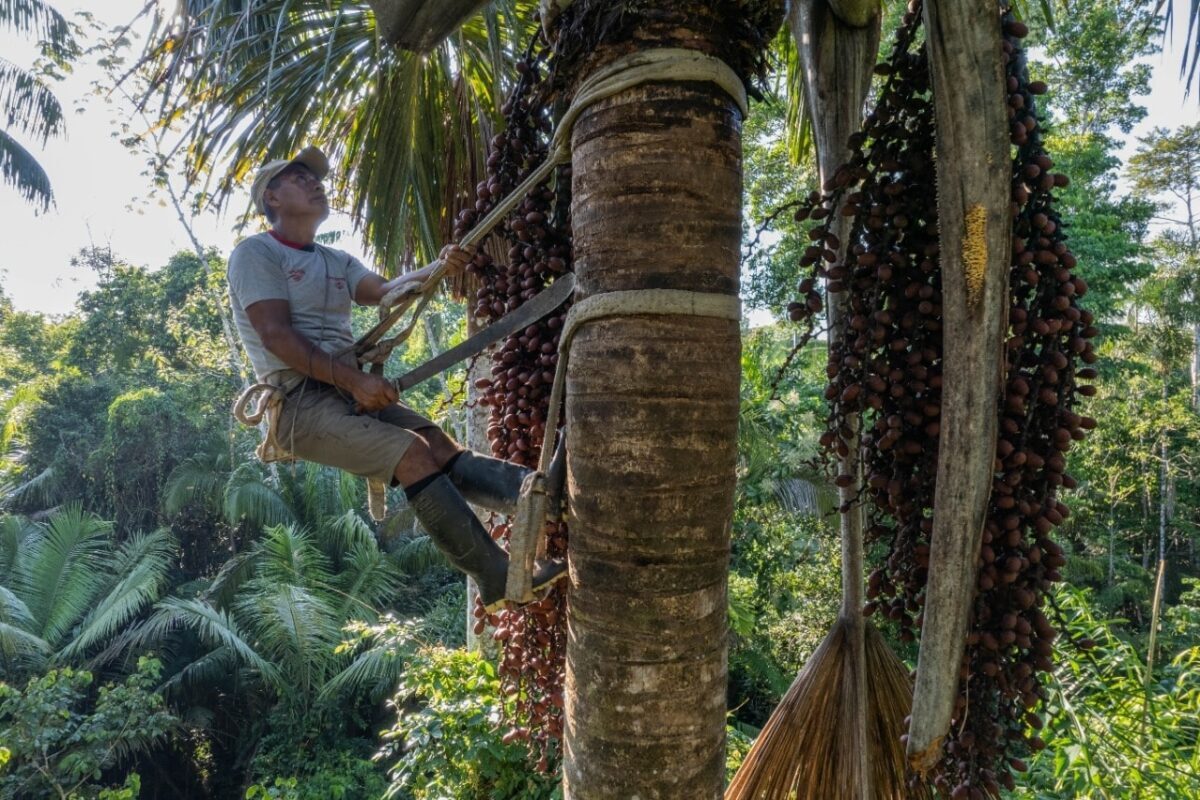Indigenous communities in the Peruvian Amazon are working to revive populations of the aguaje palm tree, commercially valued for its fruits, by shifting to more sustainable harvesting practices, Mongabay’s Aimee Gabay reported in April. The reptilian-looking fruits of the aguaje palm tree (Mauritia flexuosa) are consumed raw or used as an ingredient in beverages, soap, oils and other products. Historically, locals harvested the fruits once they fell from the female trees, which produce the fruits. But in the 1990s, after the discovery of the fruit’s market potential, both Indigenous communities and outsiders across the Peruvian Amazon began its large-scale commercial extraction. This involved cutting down entire aguaje trees, leading to a significant reduction of female palms in the region, Gabay writes. “Our ancestors weren’t aware that they were harming their palm trees,” Edber Tang Rios, president of the Maijuna-Kichwa Regional Conservation Area (ACR) management committee, told Gabay. “They had no knowledge. They cut it down and, little by little, it was dying out.” A 2012 study found that between 1995 and 2000, the number of female aguaje trees in the Pacaya Samiria National Reserve dropped from 66 to 29 per hectare (27 to 12 per acre). This resulted in a 53.8% decline in harvest. But now, the Maijuna, Kichwa and Kukama Kukamiria Indigenous communities in the Peruvian Amazon no longer cut down entire trees. Instead, they use sustainable techniques, such as safely climbing the trees to harvest the fruits. “To achieve this, we’ve had many workshops where other brothers who…This article was originally published on Mongabay
From Conservation news via this RSS feed


